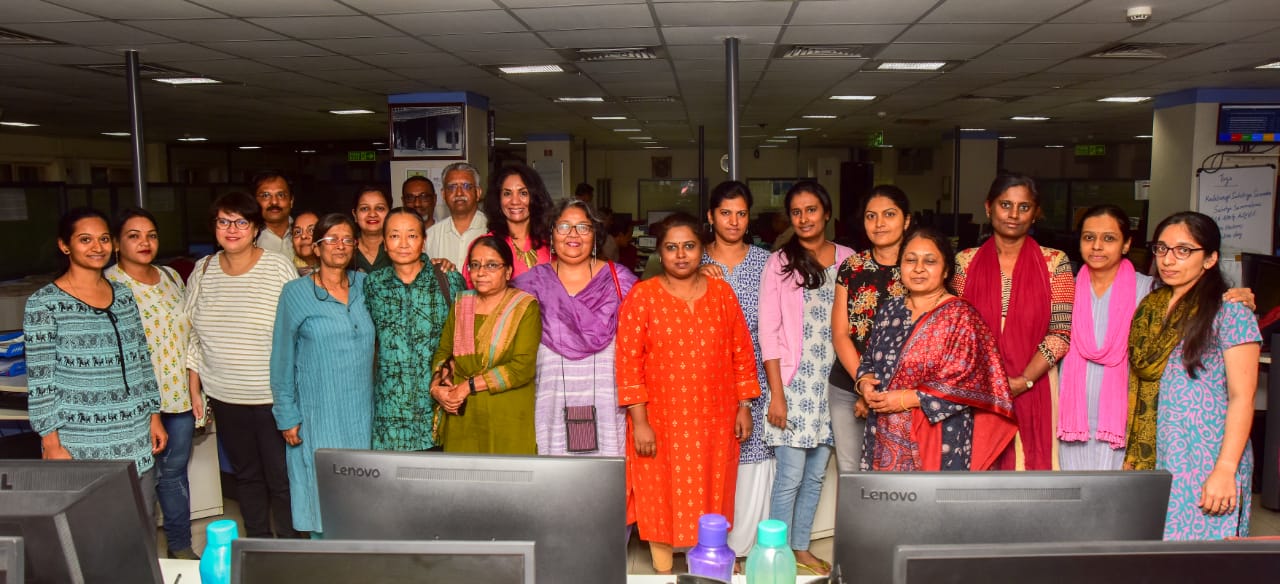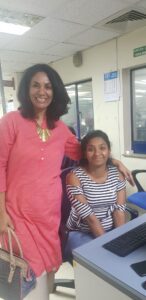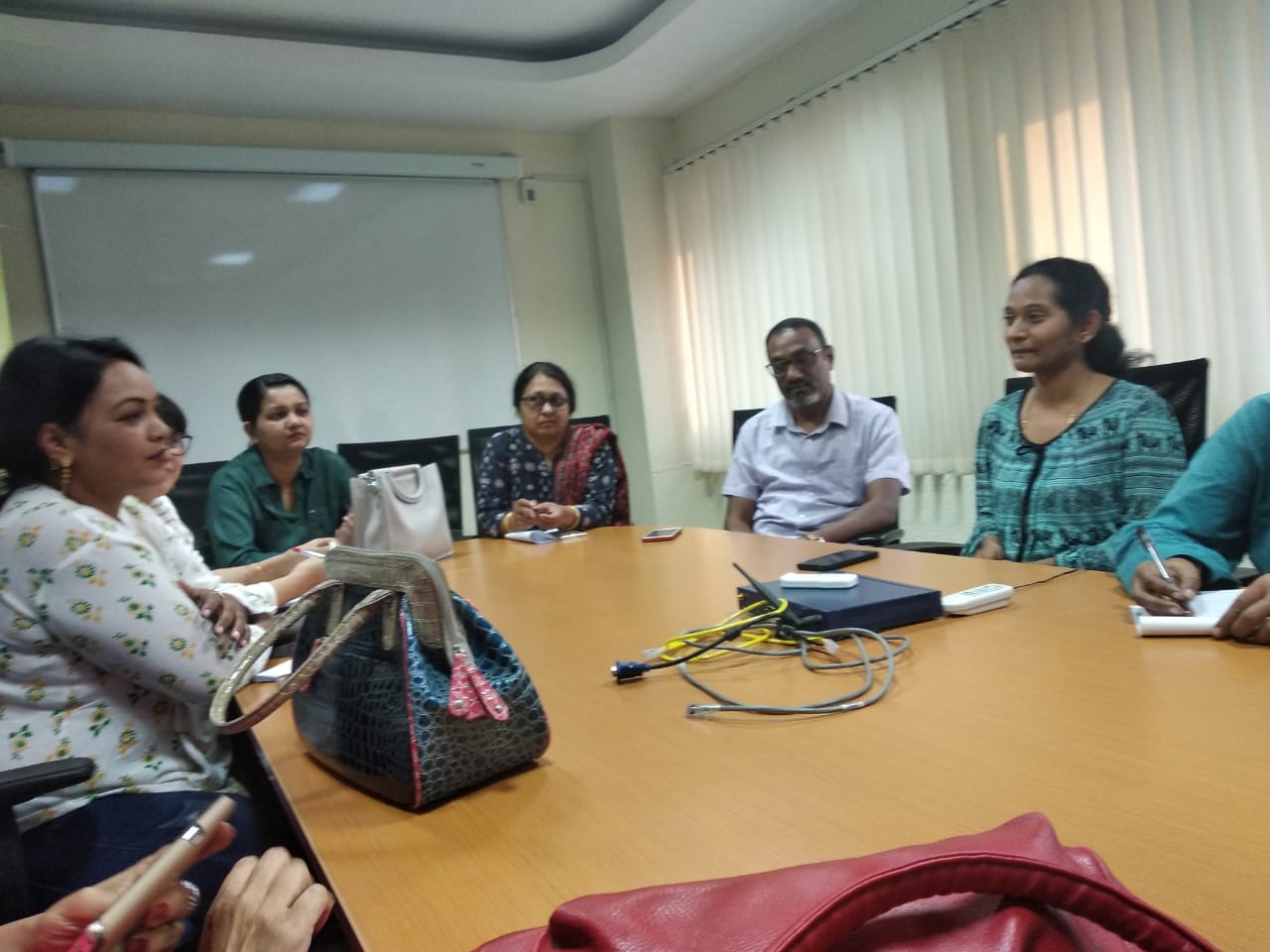
While members of the Bangalore chapter of the Network of Women in Media, India (NWMB) were planning the NWMI’s 15th national meeting, to be held in Bengaluru from 7 to 9 February 2020, it struck me that a large number of network members – most of them journalists – would be coming from different parts of the country, including smaller cities and towns. Since quite a few would be arriving a day before the actual meeting dates, I thought it may be of interest for them to visit a newsroom in the city.
The idea developed into an offsite visit to the newsroom of the prestigious local media house, The Printers Mysore Private Ltd, which has been publishing the well-known Kannada daily, Prajavani, and the English daily, Deccan Herald, from 1948, in addition to the Kannada magazines, Sudha and Mayura.
NWMB members CG Manjula, who had recently retired as Views Editor of Prajavani, after 35 years in the organisation, and yours truly, who had begun her career in journalism as a trainee in Deccan Herald, were happy to set up the interaction for the visiting network members from across the country.
The senior editorial team of Prajavani, led by Executive Editor Ravindra Bhat, Deputy Editor M Nagaraj and Chief Sub Editor Shailaja Hugar shared the best practices of the newspaper with the visiting group. They explained that the organisation had started diversifying from print and had begun to focus on podcasts and live videos on social media.

This trend is in keeping with its legacy of adapting technology. Decades ago, Prajavani was the first newspaper in the state to use facsimile technology when it started the Hubballi edition. It was also the first to start printing editions in different districts. Again, it was the first to introduce supplements to the main newspaper. ‘Karnataka Darshana’, for example, was a weekly supplement that spanned the state; similarly, there were separate supplements covering cinema, women, and so on.
Responding to questions about gender representation, the senior editorial team recalled that the recruitment of women by the Deccan Herald group had found favourable mention in a report, ‘Problems and prospects of women journalists in South India,’ commissioned by the Second Press Commission in 1980 (unpublished), according to the book, ‘Women journalists in India: Swimming against the tide,’ by R. Akhileshwari (The Women Press, Delhi).
Gayatri Devi and Kushala D’Mello were the early women journalists in the newsroom. They were followed by Poornima Rajarao (an NWMB member who is currently Editor of Hitaishini, a women’s online magazine) and, a couple of years later, the doughty triumvirate of CG Manjula, MP Susheela and Kusuma Shanbhag.

Now, of course, it is now common to see as many women as men, if not more, in the newsrooms in Bengaluru, as well as in the district editions. In fact, a few editions are helmed by women as bureau chiefs. The company’s magazines, Sudha and Mayura, were the launch pads for several path-breaking women writers.
Prajavani was also a pioneer in being diverse and inclusive across the caste divide, hiring writers from traditionally disadvantaged communities, such as Indudhara Honnapura, Ramdev Rakhe and others.
The interesting exchange with the editorial staff was followed by a walkthrough of the newsrooms of both Prajavani and Deccan Herald, and the studio of the digital division.


